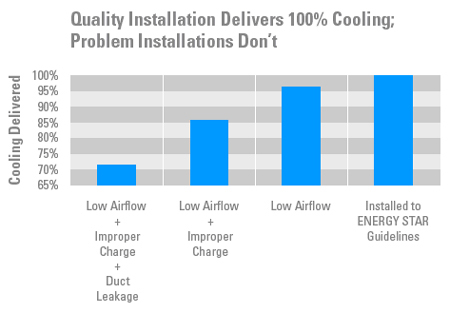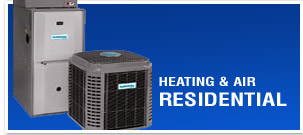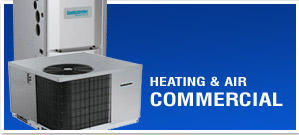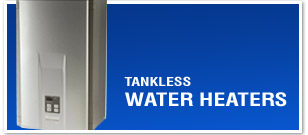| |
| Heat & Cool Efficiently |
| |
As much as half of the
energy used in your home goes to heating and cooling. So
making smart decisions about your home's heating,
ventilating, and air conditioning (HVAC) system can have
a big effect on your utility bills — and your comfort.
Take these steps to increase the efficiency of your
heating and cooling system. For more information, see
our
Guide to Energy Efficient Heating
& Cooling
 |
| |
|
|
| |
| Change your air filter
regularly |
| |
| Check your filter
every month, especially during heavy use months (winter
and summer). If the filter looks dirty after a month,
change it. At a minimum, change the filter every 3
months. A dirty filter will slow down air flow and make
the system work harder to keep you warm or cool —
wasting energy. A clean filter will also prevent dust
and dirt from building up in the system — leading to
expensive maintenance and/or early system failure. |
| |
|
|
| |
| Tune up your HVAC
equipment yearly |
| |
Just as a tune-up for
your car can improve your gas mileage, a yearly tune-up
of your heating and cooling system can improve
efficiency and comfort.
Maintain your equipment to prevent future problems and
unwanted costs. Keep your cooling and heating system at
peak performance by having a contractor do annual
pre-season check-ups. Contractors get busy once summer
and winter come, so it's best to check the cooling
system in the spring and the heating system in the fall.
To remember, you might plan the check-ups around the
time changes in the spring and fall.
A typical maintenance check-up should include the
following.
- Check thermostat settings to ensure the cooling
and heating system keeps you comfortable when you are
home and saves energy while you are away.
-Tighten all electrical connections and measure
voltage and current on motors. Faulty electrical
connections can cause unsafe operation of your system
and reduce the life of major components.
- Lubricate all moving parts. Parts that lack
lubrication cause friction in motors and increases the
amount of electricity you use.
- Check and inspect the condensate drain in your
central air conditioner, furnace and/or heat pump (when
in cooling mode). A plugged drain can cause water damage
in the house and affect indoor humidity levels.
- Check controls of the system to ensure proper
and safe operation. Check the starting cycle of the
equipment to assure the system starts, operates, and
shuts off properly.
Cooling Specific
- Clean evaporator and condenser air conditioning
coils. Dirty coils reduce the system's ability to
cool your home and cause the system to run longer,
increasing energy costs and reducing the life of the
equipment.
- Check your central air conditioner's refrigerant
level and adjust if necessary. Too much or too
little refrigerant will make your system less efficient
increasing energy costs and reducing the life of the
equipment.
- Clean and adjust blower components to provide
proper system airflow for greater comfort levels.
Airflow problems can reduce your system's efficiency by
up to 15 percent.
Heating Specific
- Check all gas (or oil) connections, gas pressure,
burner combustion and heat exchanger. Improperly
operating gas (or oil) connections are a fire hazard and
can contribute to health problems. A dirty burner or
cracked heat exchanger causes improper burner operation.
Either can cause the equipment to operate less safely
and efficiently.
Actions To Do Yourself
- Inspect, clean, or change air filters once a
month in your central air conditioner, furnace, and/or
heat pump. Your contractor can show you how to do this.
A dirty filter can increase energy costs and damage your
equipment, leading to early failure. |
| |
|
|
| |
| Install a programmable
thermostat |
| |
| A programmable
thermostat is ideal for people who are away from home
during set periods of time throughout the week. Through
proper use of pre-programmed settings, a programmable
thermostat can save you about $180 every year in energy
costs. |
| |
|
|
| |
| Seal your heating and
cooling ducts |
| |
Ducts that move air
to-and-from a forced air furnace, central air
conditioner, or heat pump are often big energy wasters.
Sealing and insulating ducts can improve the efficiency
of your heating and cooling system by as much as 20
percent — and sometimes much more.
Focus first on sealing ducts that run through the attic,
crawlspace, unheated basement, or garage. Use duct
sealant (mastic) or metal-backed (foil) tape to seal the
seams and connections of ducts. After sealing the ducts
in those spaces, wrap them in insulation to keep them
from getting hot in the summer or cold in the winter.
Next, look to seal any other ducts that you can access
in the heated or cooled part of the house. See our See
our
Duct Sealing brochure
 for more information.
for more information. |
| |
|
|
| |
| Consider installing
ENERGY STAR qualified heating and cooling equipment |
| |
| If your HVAC equipment
is more than 10 years old or not keeping your house
comfortable, have it evaluated by a professional HVAC
contractor. If it is not performing efficiently or needs
upgrading, consider replacing it with a unit that has
earned the ENERGY STAR. Depending on where you live,
replacing your old heating and cooling equipment with
ENERGY STAR qualified equipment can cut your annual
energy bill by nearly $200. But before you invest in a
new HVAC system, make sure that you have addressed the
big air leaks in your house and the duct system.
Sometimes, these are the real sources of problems rather
than your HVAC equipment. |
| |
|
|
| |
| Ask about Proper
Installation of your new equipment |
| |
| Replacing your old
heating and cooling equipment with new, energy-efficient
models is a great start. But to make sure that you get
the best performance, the new equipment must be properly
installed. In fact, improper installation can reduce
system efficiency by up to 30 percent — costing you more
on your utility bills and possibly shortening the
equipment's life. |
| |
|
 |
| |
| Make sure to ask your
contractor if their work meets guidelines set by ENERGY
STAR and the Air Conditioning Contractors of America (ACCA).
These guidelines include: |
| |
Proper Sizing of
Equipment:
Installing the right size equipment for the home is
essential to getting the best performance and comfort.
Many homeowners believe that bigger is better when
buying new heating and cooling equipment. But in
reality, a system that's too large will not keep your
home comfortable because of frequent 'on/off' cycling.
Incorrect sizing can also put stress on system
components and shorten the equipment's life. To ensure
proper sizing your contractor should provide a copy of
the home's heat gain/loss calculations for your records. |
| |
Sealing Ducts:
To ensure that ducts are properly sealed your contractor
should test the leakage rate. If the ducts are very
leaky (i.e. more than 20% of the air moving through the
system is leaking into spaces you do not want heated or
cooled) your contractor should use duct sealant
(mastic), a metal-backed (foil) tape or an aerosol
sealant to seal the seams and connections of ducts.
After the ducts are sealed ask your contractor to wrap
them in insulation. |
| |
Proper Refrigerant
Charge (Central Air Conditioners and Heat Pumps Only):
A properly charged system will operate more efficiently
and help prolong the life of the heating and cooling
system. To ensure the system has the correct amount of
refrigerant a contractor must test and confirm that the
system is properly charged. If the system is not
properly charged the contractor should make the
appropriate adjustment by adding or removing
refrigerant. |
| |
Optimizing Air
Flow:
If air flow in your heating and cooling system is too
high or too low, you may comfort problems and higher
utility bills. A contractor should test air flow and
make any needed adjustments for optimal performance |
| |
Use the
ENERGY STAR quality installation
checklist
 when soliciting bids from contractors to help ensure
that your system is properly installed.
when soliciting bids from contractors to help ensure
that your system is properly installed. |



























